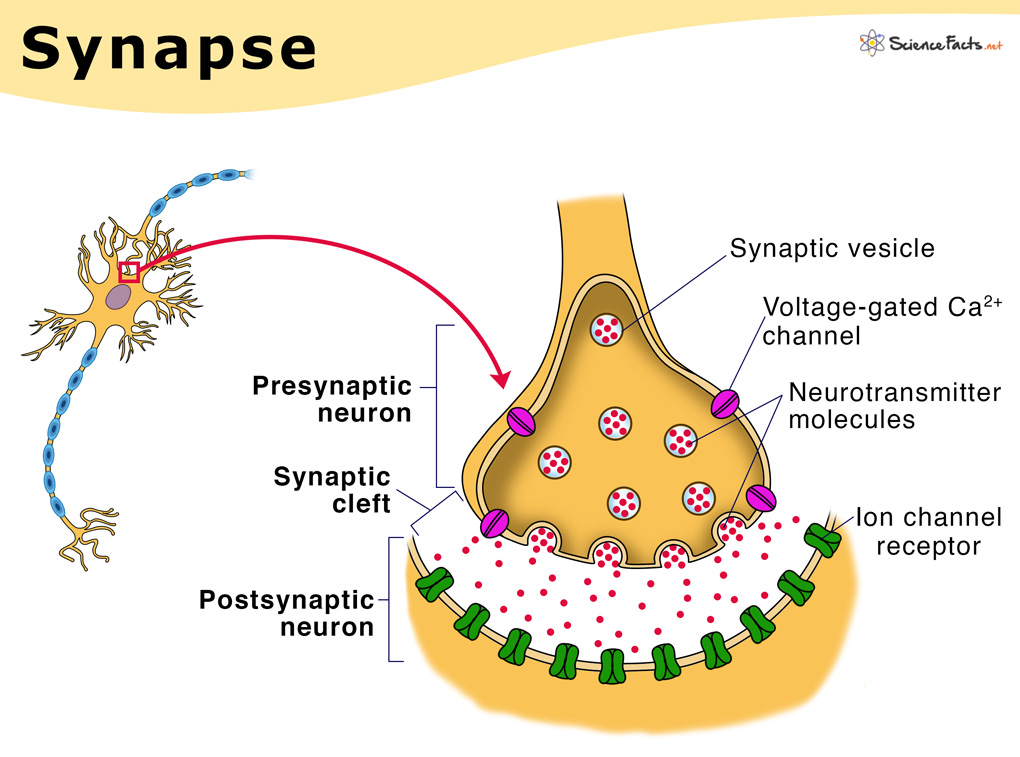The term ‘synapse’ was first coined by Charles Sherrington in 1897, from the Greek words ‘syn’, which means ‘together’ and ‘haptein’ meaning ‘to clasp’.
Location
Structure
What Happens at the Synapse
Parts
Synapses are composed of three main parts:
Types
Synapses are fundamentally classified into two different types based on how the neurons function to communicate: 1) chemical synapse and 2) electrical synapse.
- Chemical Synapse Found in vertebrates, it works using neurotransmitters that establish the virtual connection between the presynaptic and postsynaptic neurons. The arrival of the signal in the presynaptic neuron triggers the release of neurotransmitters, which then diffuses across the synaptic cleft. This step occurs in the presence of calcium ions, where the fusion of the synaptic vesicle with the axon terminal membrane of the presynaptic neuron allows the release of the neurotransmitter into the synaptic cleft. The binding of the neurotransmitter to the receptor of the postsynaptic neuron excites the postsynaptic neuron to carry forward the signal.
- Electrical Synapse Mostly found in invertebrates and lower vertebrates, they form direct physical connections between the presynaptic and postsynaptic neurons. This connection takes the form of a channel called a gap junction, which allows ions to flow directly from one cell into another.
